Sumac + Sumac + Sumac = Gonna Need Some Space
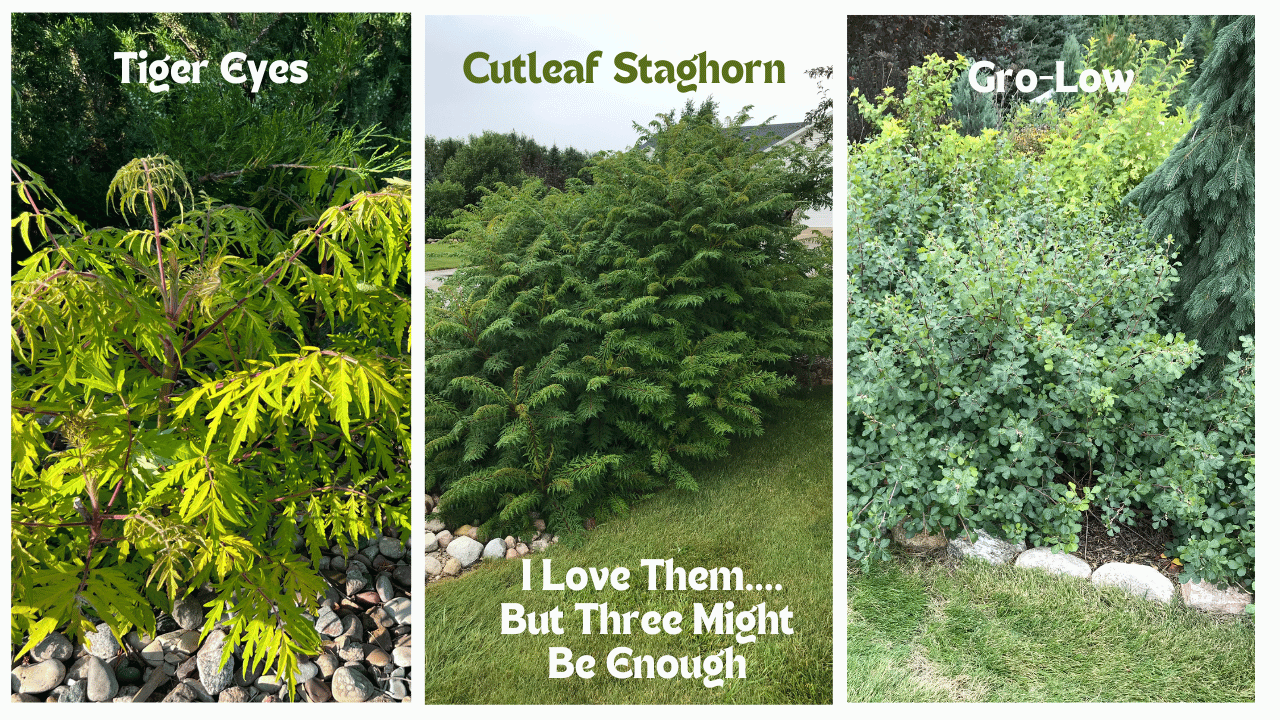
Sumac, generally shrubs or small trees, are a popular landscaping choice.
When used in our landscapes, there is a lot to love about the sumac, but you will need some space as they can be aggressive spreaders due to their rhizome roots, a horizontal underground stem that puts out vertical shoots from the mother plant at various distances. Depending on the variety, they will have compound pinnate leaves, simple, or trifoliate leaves.
Let’s take a look at three varieties that are doing fantastic in my landscape in the northern Great Plains area in Zone 4.
Some of the characteristics we’ll be covering in the sumacs:
- Unique Forms
- Vibrant Leaf Colors
- Showy Fall Seed Heads
- Cold Hardy
- Drought tolerance
Tiger Eyes Cutleaf Staghorn Sumac, Zone 4-8, Rhus typhina ‘Bailtiger’
What stands out on the Tiger Eyes is the striking golden-yellow leaf color. The large compound leaf is deeply cut, lacy-like, with a prominent pink petiole. The new spring growth is chartreuse, changing to the vivid yellow and finishing the season with a brilliant scarlet-orange leaf color, making this a most impressive sumac for all seasons. The deer and rabbits usually prune back my Tiger Eyes each winter, but due to its vigorous nature, it comes back beautifully each spring. You can check out the damage and result here.
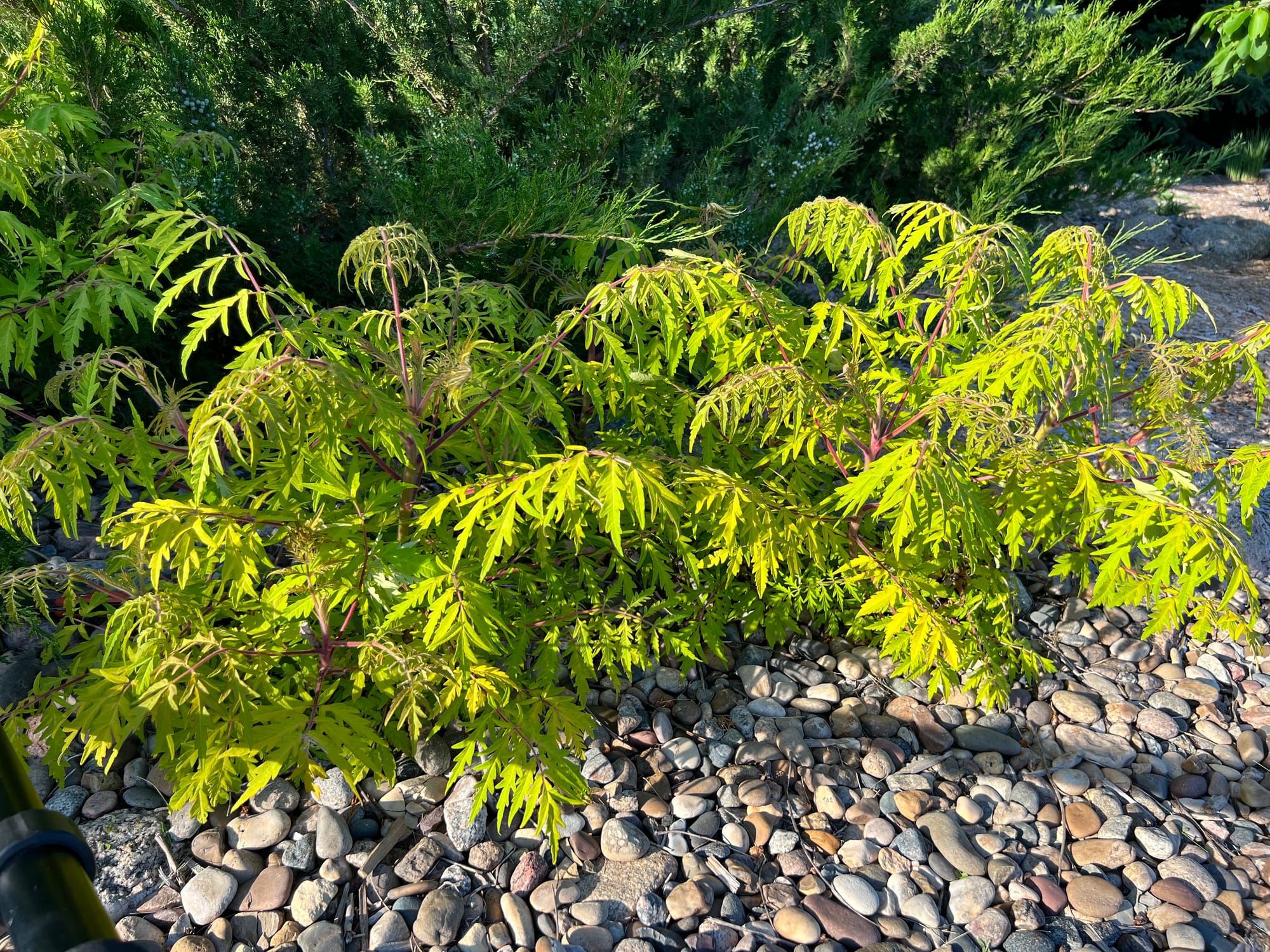
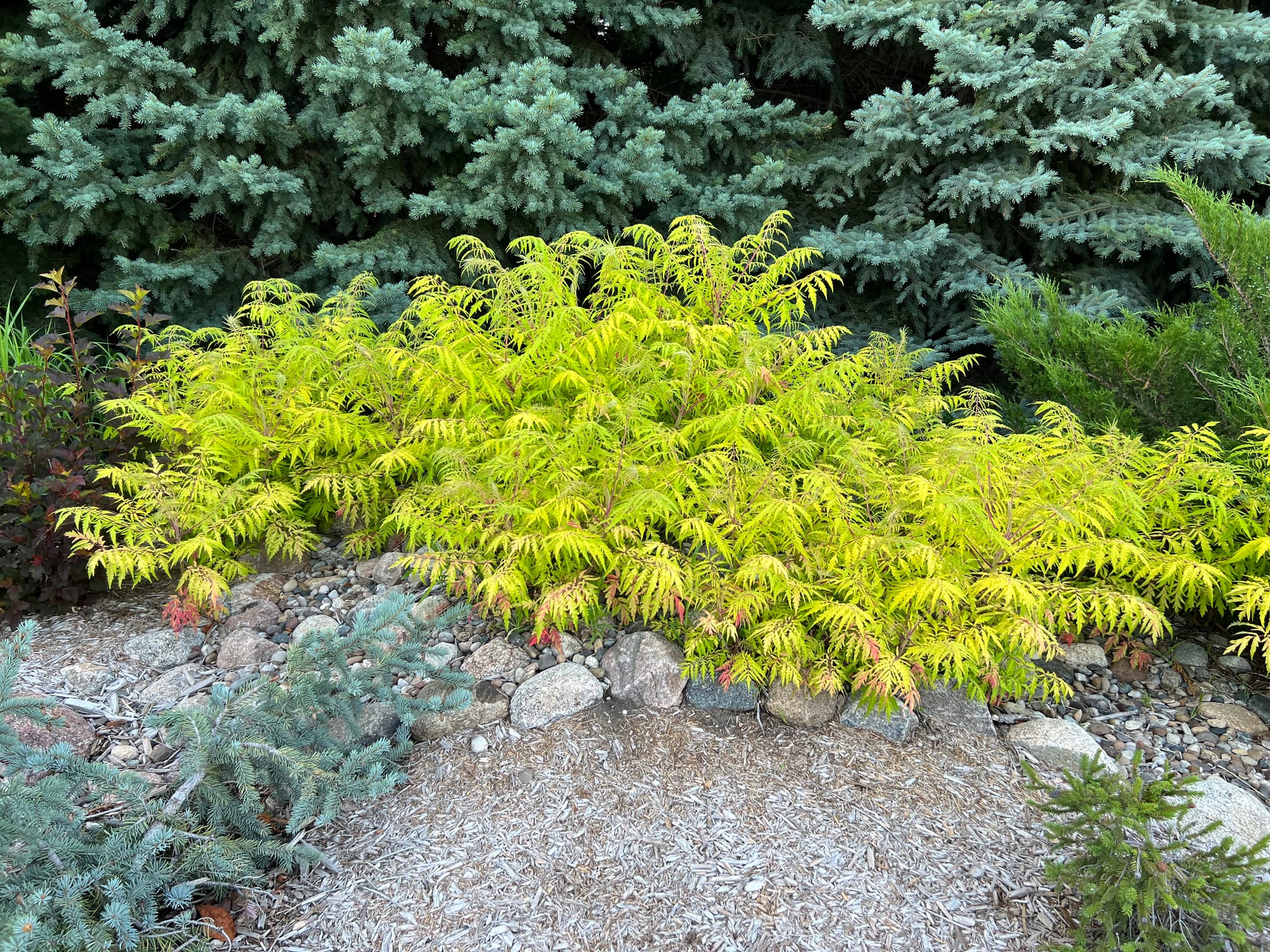
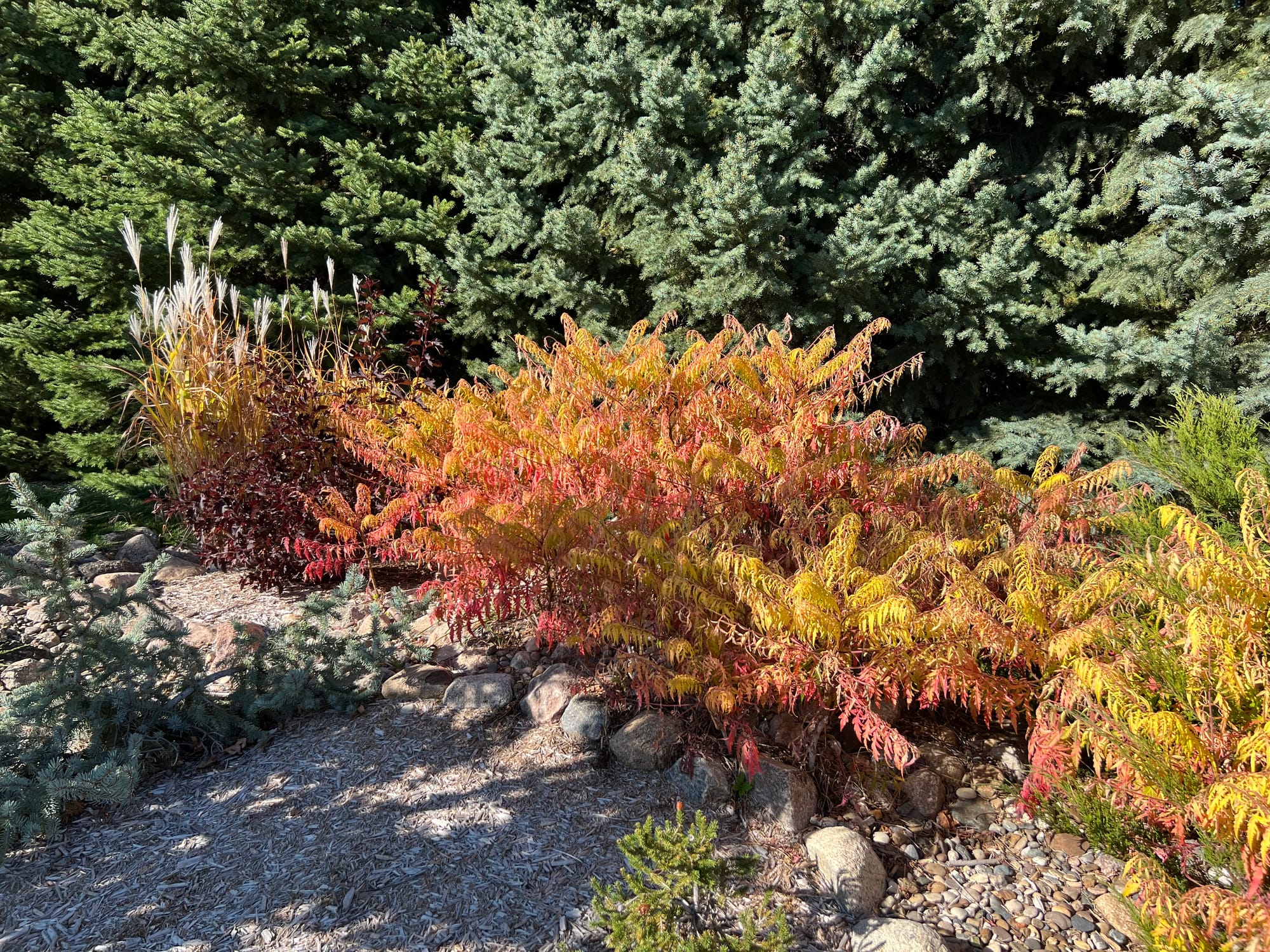
Tiger Eyes Cutleaf Staghorn Sumac
Cutleaf Staghorn Sumac, Zone 3, Rhus typhina ‘Laciniata’
Cutleaf Staghorn is similar to the Tiger Eyes but has green leaves all season before offering some beautiful red fall colors. This variety is also more aggressive than the Tiger Eyes in its spreading habit. The name staghorn comes from the antler-like curve of the stems, and the velvety brown fuzz that covers the younger stems - as on a stag or male deer. Showy fall seed heads will form on both varieties covered so far but only on growth at least a year old. Tiger Eyes is a First Editions introduction, a great brand offering several cold-hardy selections.
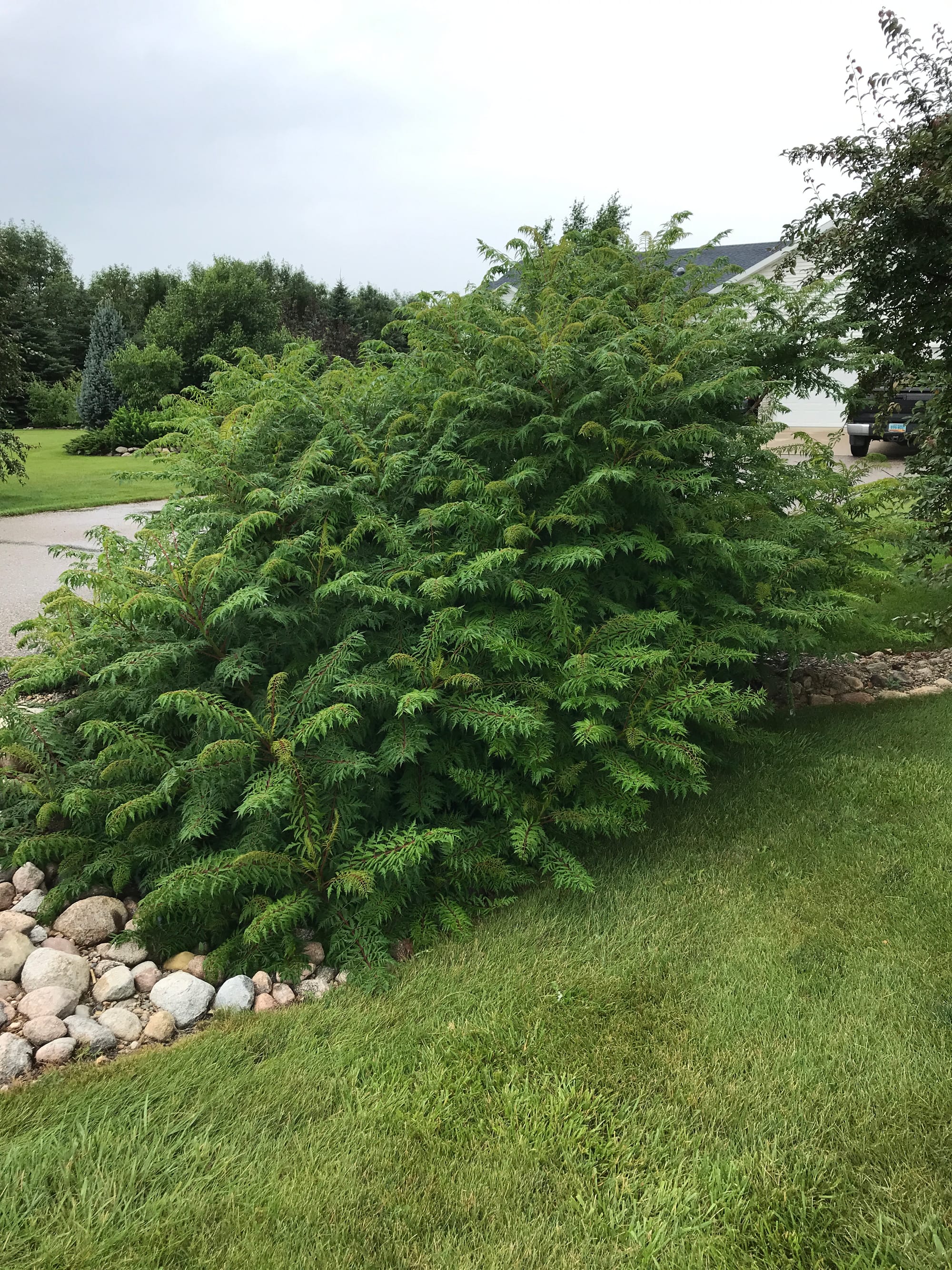
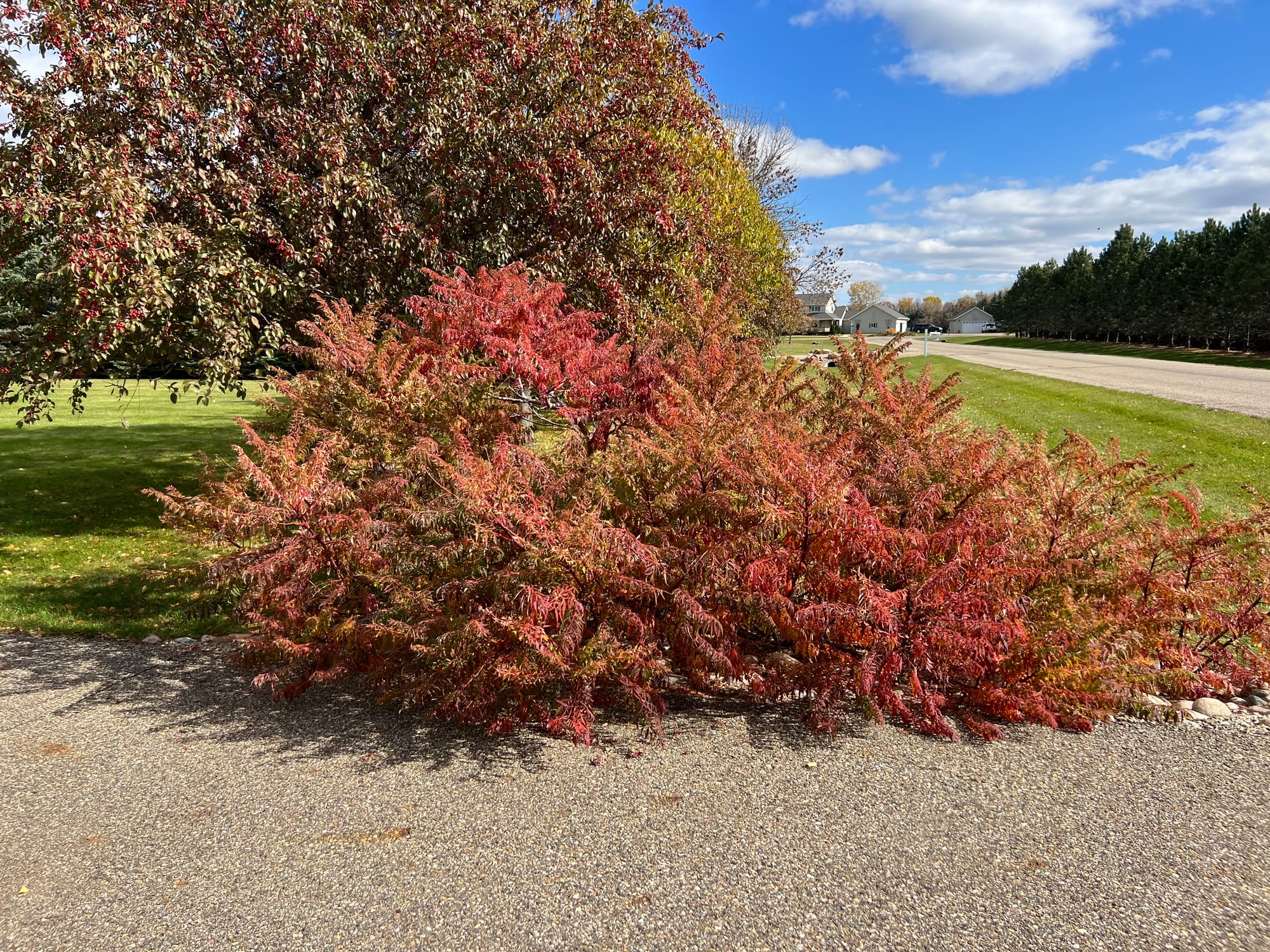
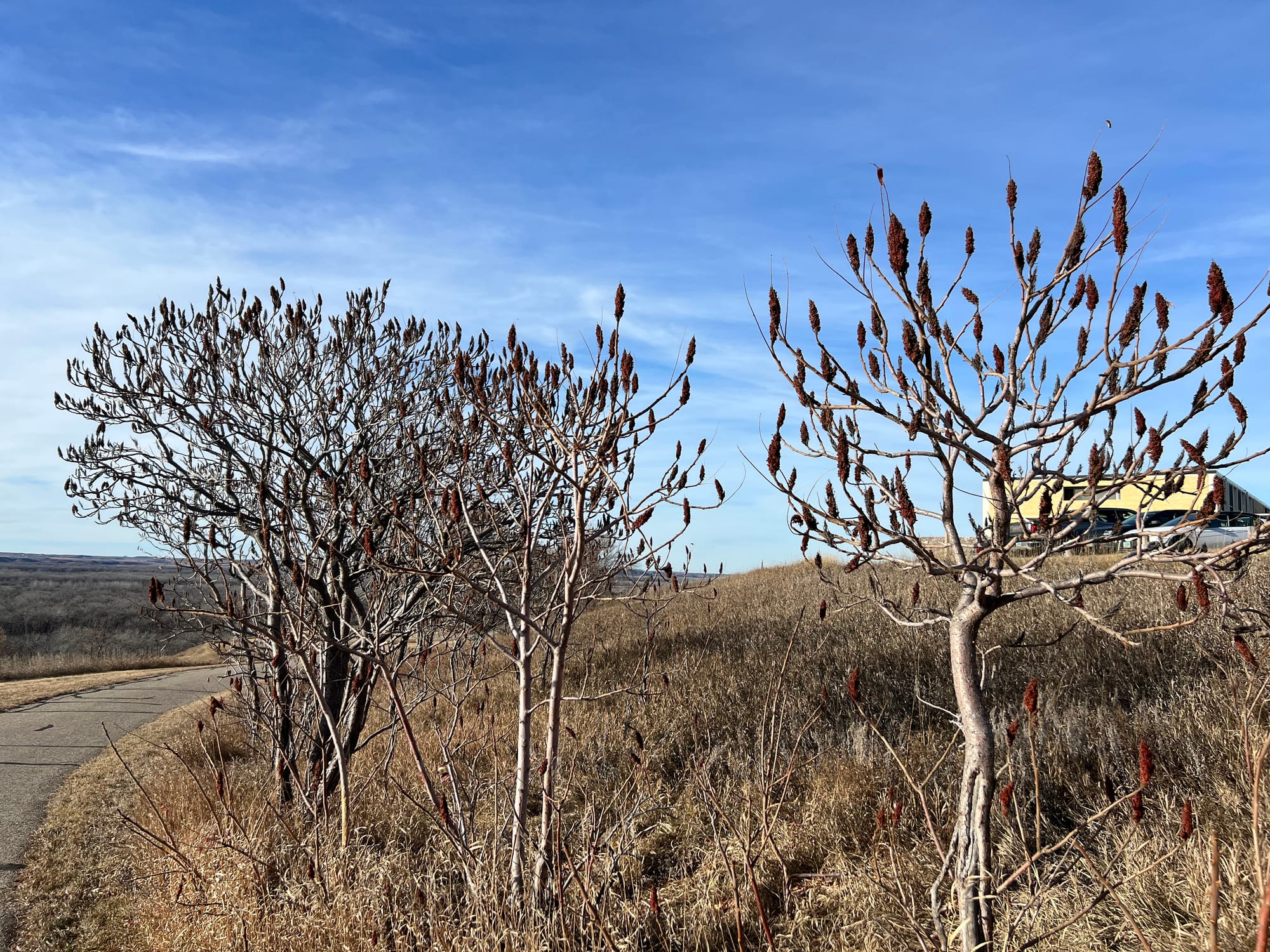
Cutleaf Staghorn Sumac
Gro-Low Sumac, Zone 4-9, Rhus aromatica ‘Gro-Low’
True to the invasive habit of sumacs, grow-low is no exception and is an excellent choice for a lower growing ground cover or on banks where erosion control may be necessary. It gets part of its Latin name, “aromatica,” from the strong scent noticed when brushing by or crushing the leaves. I find the smell pleasant, but a similar upright-growing sumac has acquired the common name of Skunk Bush Sumac, so you’ll have to be the judge.
Grow-low has a glossy trifoliate leaf quite different from the two previous staghorn varieties discussed and a much smaller, less showy seed head. The fall colors are equally showy, though, ranging from burgundy, orange, red, and yellows.
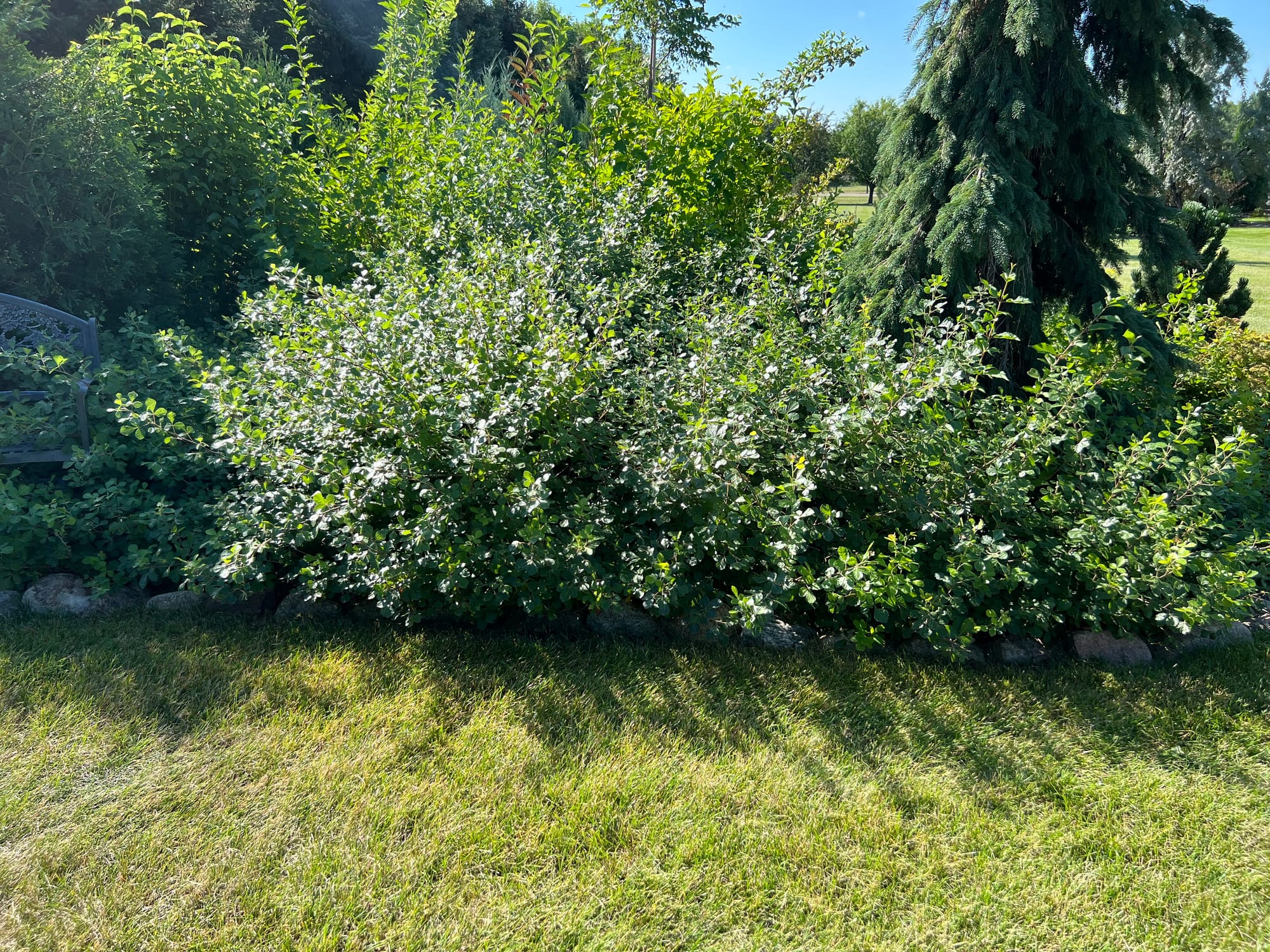
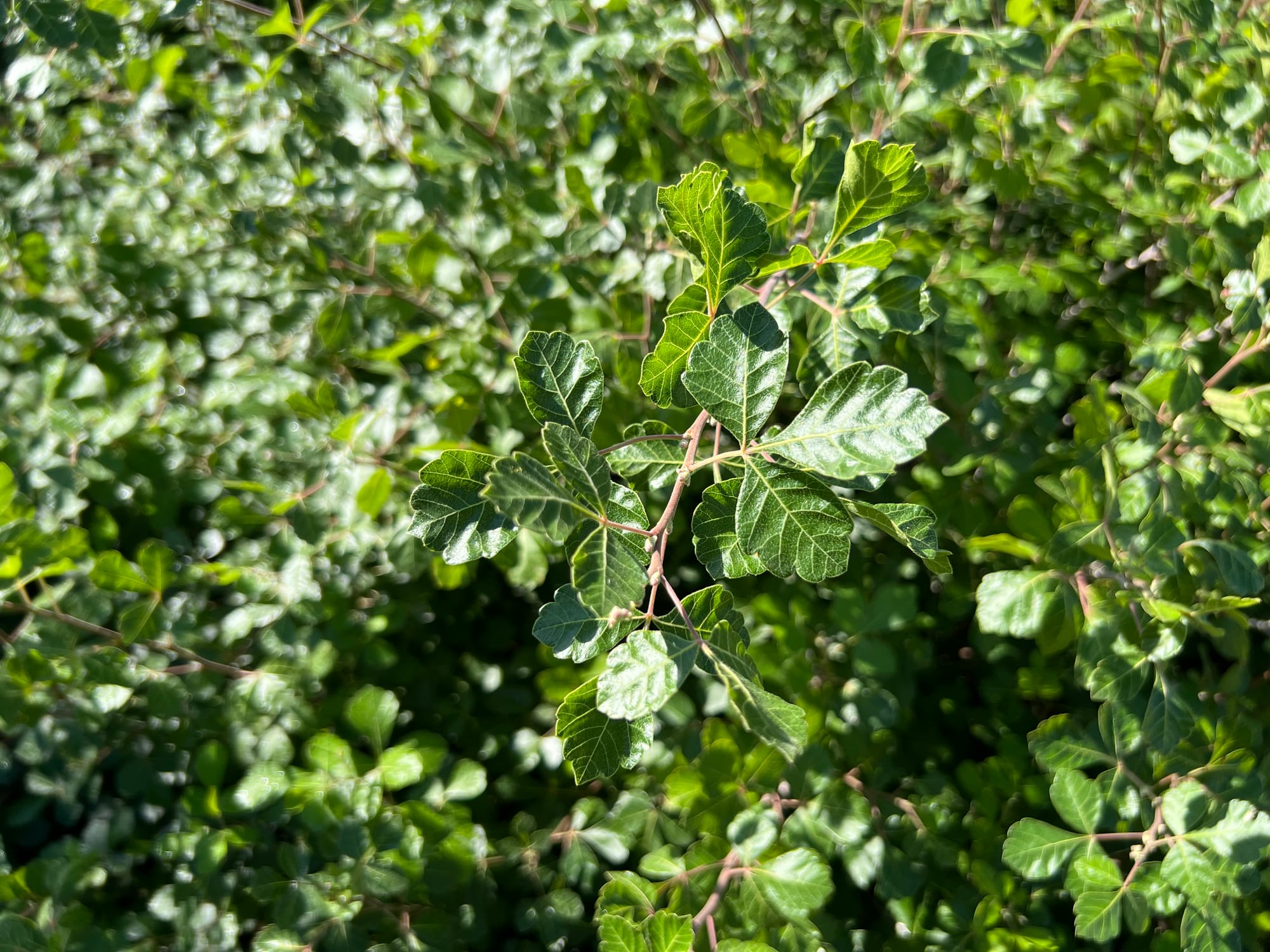
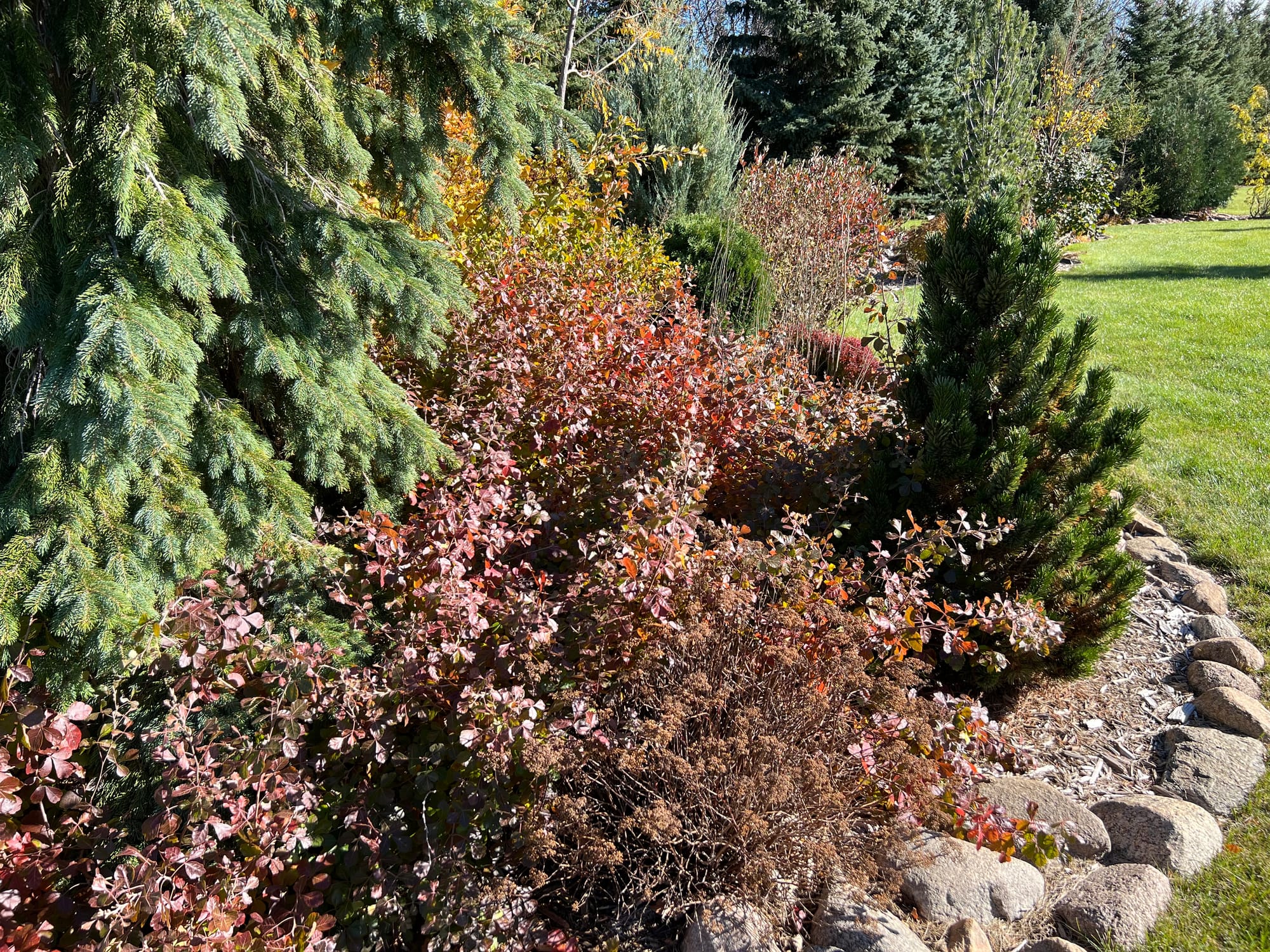
Gro-Low Sumac
All three of the sumac varieties covered here are very hardy and very drought tolerant. And as we mentioned, they are also very aggressive spreaders.
If you have a few more minutes, please enjoy the guided video tour of these three spectacular sumac shrubs.
Thanks for stopping by Garden Hike!
Kevin
Garden Hike is supported by its audience. When you purchase through links on this site, we may earn a small commission at no additional charge to you. Thank you.
Click A.M.Leonard’s banner below to check out their great selection of tools and supplies.

